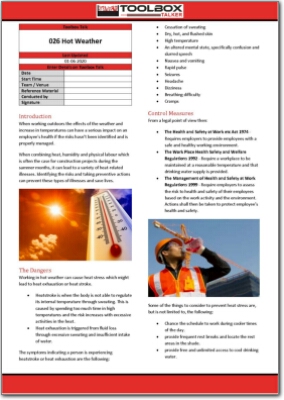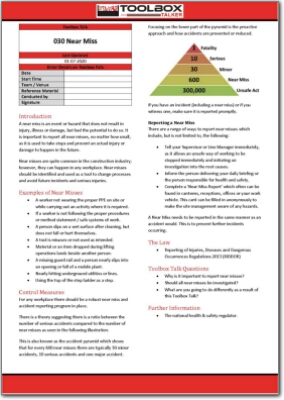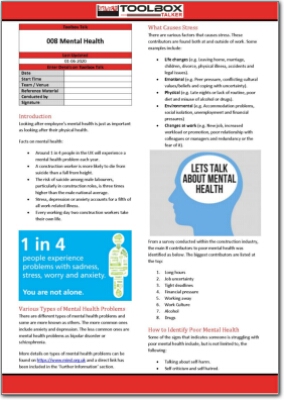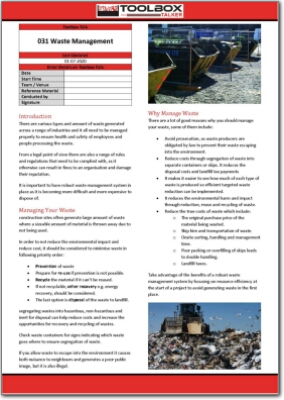Description
In UK employers are legally required to assess the risks to the health and safety of their workers according to The Management of Health and Safety at Work Regulations 1999. When the assessment identifies hazardous manual handling of loads, they should also comply with The Manual Handling Operations Regulations 1992.
These regulations are enforced by the Health and Safety Executive (HSE) who is the UK government agency responsible for enforcing health and safety in the workplace.
Regulations for manual handling can be used by the individual worker to understand how they can avoid unnecessary hazards from manual handling at work. Employers can use them to mitigate risks and reduce the number of days their employees are off from work due to back injuries and similar. Our manual handling toolbox talk help employers keep their employees safe and stay within the requirement of the law.
Definition of Manual Handling
Manual handling can be defined as:
- The term manual handling covers a wide variety of activities including lifting, lowering, pushing, pulling and carrying.
Items Covered in Manual Handling Toolbox Talk
Our manual handling toolbox talk is split up in following sections:
- Introduction: Provides an overview of the manual handling and its definition.
- The Dangers: This section covers various types of hazards associated with manual handling.
- Control Measures: Outline the type of controls that can be used to mitigate risks and how to perform a safe lift.
- Toolbox Talk Questions: Includes a few questions to ensure the attendees have understood the content of the toolbox talk.
Each of our toolbox talks include an additional page where relevant dangers on site can be identified and discussed, together with an attendance list where participants can be recorded and sign.
Purchase our Manual Handling Toolbox Talk to keep your employees safe, or take advantage of our toolbox talk packages which contains a range of our toolbox talks at a reduced cost.





